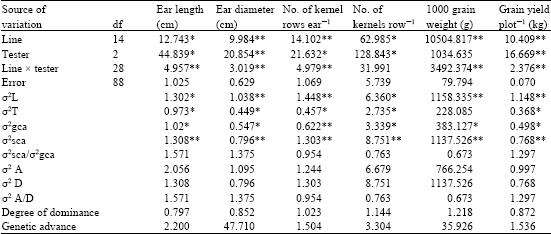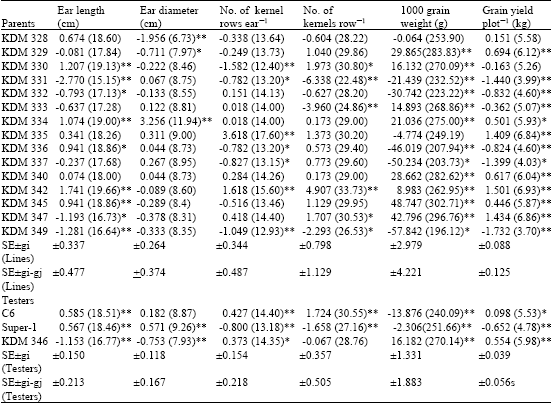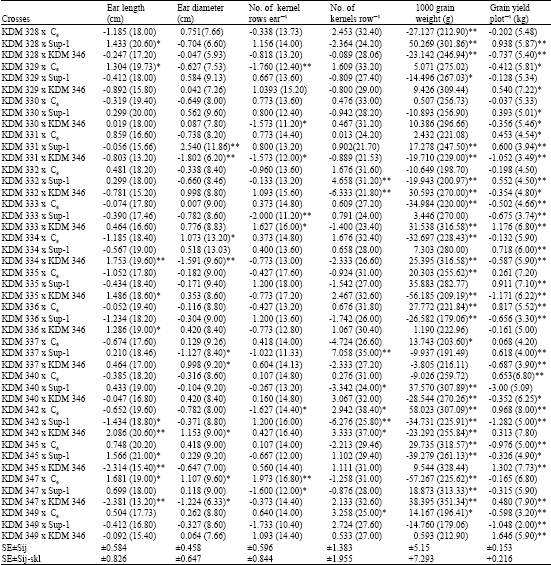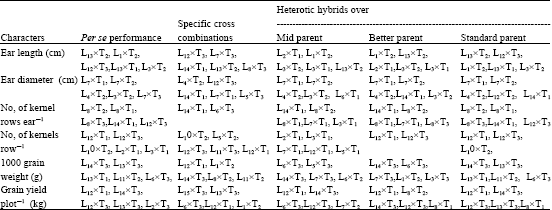Research Article
Combining Ability Analysis for Yield and Yield Related Traits in Maize (Zea mays L.)
Division of Plant Breeding and Genetics, Sher-e-Kashmir University of Agricultural, Sciences and Technology of Kashmir, Jammu and Kashmir, India
F. A. Nehvi
Division of Plant Breeding and Genetics, Sher-e-Kashmir University of Agricultural, Sciences and Technology of Kashmir, Jammu and Kashmir, India
S. A. Wani
Division of Plant Breeding and Genetics, Sher-e-Kashmir University of Agricultural, Sciences and Technology of Kashmir, Jammu and Kashmir, India
Rehana Qadir
Division of Plant Breeding and Genetics, Sher-e-Kashmir University of Agricultural, Sciences and Technology of Kashmir, Jammu and Kashmir, India
Zahoor A. Dar
Division of Plant Breeding and Genetics, Sher-e-Kashmir University of Agricultural, Sciences and Technology of Kashmir, Jammu and Kashmir, India












